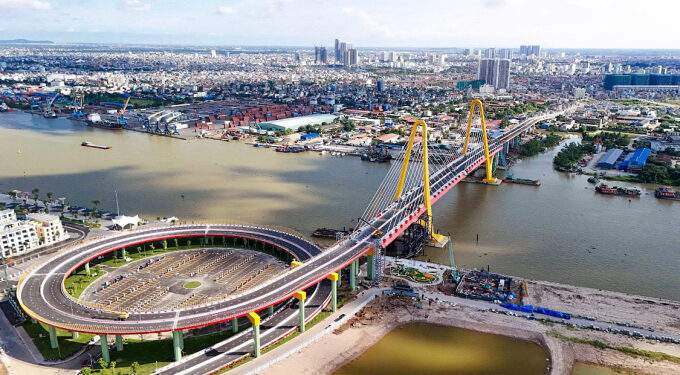The 4,400-hectare complex in the south of the city will be developed in three phases, according to a decision by the board of director.
Phase 1 will begin next year and be completed by 2030, with the subsequent ones scheduled for 2031-35 and 2036-40.
Vingroup plans to invest 15% of the amount from its own resources and mobilize the rest from other sources.
The company and its subsidiaries have in recent years invested in several large projects in Hai Phong.
They include the $1.5-billion VinFast automobile factory in the industrial zone on Cat Hai Island off the city.
Housing and property arm Vinhomes is currently developing its fourth project in Hai Phong on some 240 hectares.
It has completed three major ones, Royal Island (870 hectares), Imperia (78 hectares) and Mariana (50 hectares).
In the industrial real estate sector, Vingroup plans to break ground on two industrial parks in the city next year.
 |
|
Hai Phong City in northern Vietnam, July 2025. Photo by VnExpress/Le Tan |
It also plans a liquefied natural gas-to-power project.
Hai Phong has entrenched its position as an industrial production hub in northern Vietnam.
Following its recent merger with Hai Duong Province in July, the expanded Hai Phong City is now home to 15 large industrial parks.
It also boasts one of the largest deep-water port networks in the country.
Cargo throughput at Hai Phong’s ports has steadily grown by 12-15% annually.
In 2024 they handled 190 million tons of cargo, and the projection is 212 million tons this year.
Hai Phong’s southern coastal economic zone, outlined in the city’s plans last year, requires 20,000 hectares and VND400-600 trillion ($15-23 billion) to build.
The city’s leaders admit that foreign industrial investment has been the main driver of economic growth over the past decade.
But the Dinh Vu–Cat Hai economic zone, established in 2008, is nearly fully developed and lacks land for new projects.





